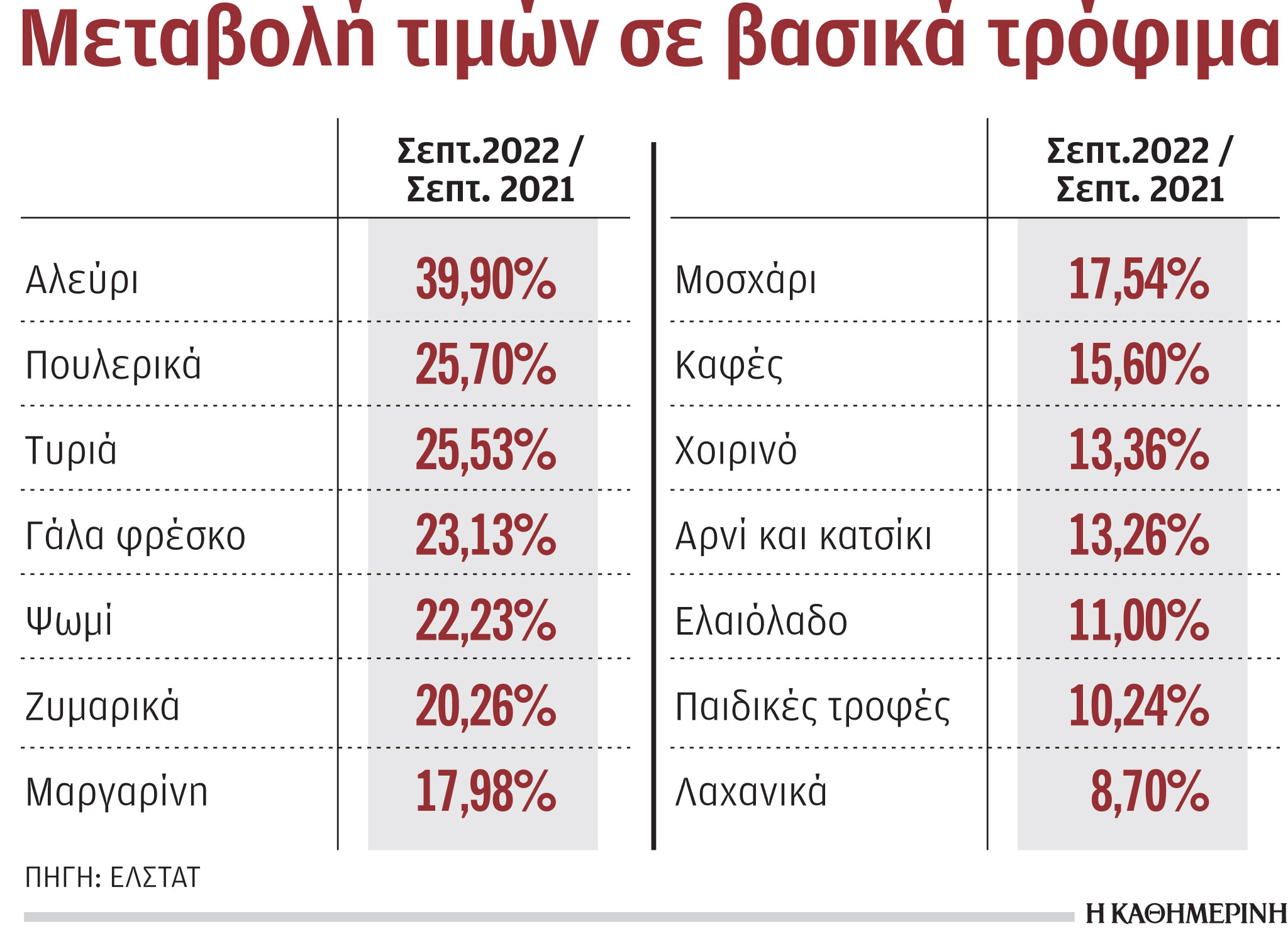
Hopes for its de-escalation inflation leads to a significant reduction in its price natural gas in recent days even below 100 euros per MWh (in Dutch TTF), as its contribution to inflation in Greece exceeds 50%. At the same time, a general de-escalation in energy prices can prevent, of course, not for all goods and services, the emergence of spillovers on the prices of other goods, services and wages.
However, there is one negative dimension to the above generally positive scenario: a possible de-escalation of inflation due to a significant drop in demand, causing a further slowdown in growth, if not a new round of recession. Even if the decline in energy prices continues, de-escalation of inflation is not expected to be rapid: firstly, because there is a stock of high-cost products, and producers will by no means make them affordable. much lower prices – given that there is already pressure on profit margins – secondly, because there are products whose production costs continue to rise, as this is largely dependent on virgin and recycled materials, which still have significantly high prices.

Dairy and cheese products are currently a typical example, as the raw material, milk, is on a steady upward trend. In August, according to the Greek Agricultural Organization Dimitra (ELGO Dimitra), the average producer price for cow’s milk was 0.55 EUR/kg compared to 0.38 EUR/kg a year ago, i.e. an increase of about 45%. In fact, in the past few days, according to information from the market, agreements were concluded between dairy companies and producers at a price of 0.60 euros / kg.
A large volume of products is produced at a high cost, while raw materials and secondary materials remain expensive.
The situation is similar with sheep and goat milk, which is mainly used for the production of feta and other cheeses. In August, the average producer price for sheep milk was 1.28 EUR/kg from 0.97 EUR/kg in August 2021, an increase of 32%. However, the new contracts concluded by the industries during this period provide for producer prices even at the level of 1.70 euro/kg. For goat milk, the average price was 0.79 EUR/kg in August from 0.61 EUR/kg in August 2021, i.e. increased by 29.5%.
This development is associated both with energy costs, with a 46.1% increase in energy prices in the agriculture and livestock sector in the eight months from January to August 2022, and with a 23.9% increase in animal feed prices. In fact, as noted by livestock farmers and dairy industry leaders, there has been no stock of animal feed since last year, and all of it was produced and purchased at much higher prices due to interruptions in the supply of wheat, barley and corn to the market for the war in Ukraine. In fact, the news from the world grain market is not very pleasant, since, according to the latest estimates of the International Grains Council (IGC), in the period 2022-2023. decline in total production is expected, mainly due to a significant decline in world corn production in Ukraine, the EU, and the US. Rising feed prices are also expected to drive up meat prices, from chicken to beef.
Prices also remain high for a variety of packaging materials, from glass bottles, which are up 80%, to bottle caps, up 70%, while the persistence of very high aluminum prices is having a significant impact on the cost of packaging many food products. and alcoholic and non-alcoholic drinks. Moreover, plastics prices remain at a high level compared to last year, despite the decline recorded in recent weeks.
Fewer big money purchases in 9 months
At the same time, the unified consumer price index records an annual increase of an average of 9.5% for the nine months from January to September 2022 (inflation closed at 12% in September), but revenues increase by only 1.7%, according to According to ELSTAT data for the second quarter of 2022, consumers in Greece are changing their habits dramatically. What’s more, 90% of consumers in Greece, more than ever, feel that prices are rising, according to the latest consumer trends survey by market research firm NielsenIQ. The corresponding percentage in 2020 was 70%.
Thus, consumers are forced to buy less products, which of course does not mean that they give away less money. According to the latest available NielsenIQ data, in the nine months from January to September 2022, we allocated €7.27 billion to supermarkets, up about €320 million compared to the corresponding nine months of 2021, to buy a total of 1.8% less. products.
The decrease in sales volumes affects virtually all three main product groups, namely food, household goods (detergents, stationery, etc.) and personal care and beauty products (shampoo, shower gels, etc.). In the eight months from January to August, unit sales of food fell 0.9% from the corresponding period in 2021, household goods by 6.3%, and personal care and beauty products, according to IRI, also a research firm. by 4.9%.
The trend, according to market analysts, will be the same in September and October. The fall in sales in the so-called category of bazaar goods sold in supermarkets (clothing and footwear, household appliances, kitchen utensils, etc.) is sharp, since despite the increase in prices, this category recorded a zero growth in turnover.
Consumer switching to private label products is also significant, with sales “up” at 11.2% in eight months, while market share has steadily increased since mid-2021.
Source: Kathimerini
Lori Barajas is an accomplished journalist, known for her insightful and thought-provoking writing on economy. She currently works as a writer at 247 news reel. With a passion for understanding the economy, Lori’s writing delves deep into the financial issues that matter most, providing readers with a unique perspective on current events.